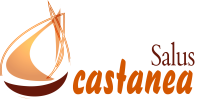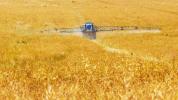Operational Group: Modernization of wheat cultivation to optimize nitrogen fertilization through the application of precision agriculture techniques and decision-making tools
- Type Operational group
- Status In progress
- Execution 2021 -2023
- Assigned Budget 291.200,00 €
- Scope Autonómico
- Autonomous community Andalucía
- Main source of financing CAP 2023-2027
Wheat is one of the three most widely produced grains globally. In 2019, global wheat production reached 730 million tons. Wheat is the most widely consumed cereal by the Western population. Wheat is used to make flour, whole wheat, semolina, beer, and a wide variety of food products. More than 90% of the wheat produced is so-called bread wheat, belonging to the Triticum aestivum species. Current criteria for selecting wheat do not take into account its nutritional value, but rather its functional qualities for preparing processed foods, especially in developed countries, which is why varieties with high gluten content are used.
Gluten is particularly deficient in the essential amino acid lysine, so the higher the gluten content, the lower the quality of wheat proteins and their nutritional value. Wheat's response to nitrogen is substantially lower than that of corn. Urea's nitrogen utilization efficiency averages 18 to 25%, reaching 50% in the best case, significantly lower than that of corn. Losses due to surface runoff are less than 15% and occur when the fertilizer is applied to the surface, without incorporation, on sloping soils. Losses are lower with direct seeding.
- Obtaining and comparing historical crop and production data, as well as technical and scientific knowledge. Designing, establishing, and monitoring dryland and irrigated crop fields for the modernization of production techniques.
- App Development: Implementation of the model based on historical data and results from demonstration fields on a simple and intuitive mobile platform.
- Assessment of the impact of traditional and modernized crops on the natural environment, the human environment, and climate change.
- Identification and selection of wheat crop management and planning guidelines at the national level.
- Dissemination of the project once the funding period has ended.
- Dissemination and promotion of the project to all stakeholders in the value chain and the general public.
- Promote the efficient use of nitrogen in wheat cultivation to increase productivity, profitability, sustainability, and adaptation to climate change by developing a predictive model incorporated into an intuitive and freely accessible app.
- Improve knowledge about wheat cultivation and its current situation.
- Obtain historical data to develop the APP.
- Obtaining productivity and quality data in wheat crops by evaluating different agronomic variables. Adjusting the fertilization model for wheat.
- Development of an open-access APP for decision-making.
- Quantification of the reduction in the impact of modernized crops compared to traditional crops. Proposed management and planning guidelines for wheat cultivation.
- Communication and dissemination of the project, its results and contributions to current knowledge.
- Coordinator/entity name: FITOSANITARIOS Y TECNICA, SA
- Postal address: Avda. de la Ilustración 16
- Coordinator/entity email: fitesa@fitesa.com.es
- Telephone: 956317610
The efficiency with which crops utilize the applied fertilizer is of utmost economic importance, as it is directly related to the benefit of fertilization. Efficiency can be expressed as the units of product generated per unit of nutrient applied, or as the proportion of the added nutrient taken up by the crop. Improving nitrogen efficiency requires innovation. One of the best-known strategies in agriculture is the "4Rs," which follows the principles of applying the "right product," the "right dose," at the "right time," and in the "right place." It is an example of how the use of all technological advances—whether remote sensing tools, Big Data, agricultural machinery, or fertilizer technology—is required to improve nitrogen use efficiency in agriculture.
- FITOSANITARIOS Y TECNICA, S.A.
- FITOSANITARIOS Y TECNICA, S.A.






